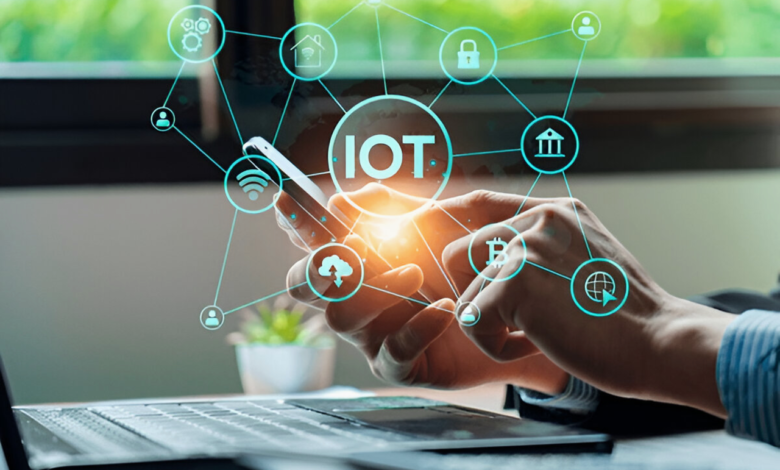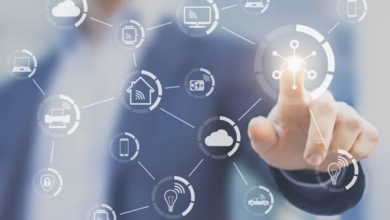
The (Internet of Things) IoT Devices is revolutionizing daily life, and 2025 brings an exciting wave of smart devices to American consumers. From AI-powered home automation to cutting-edge health monitors, these IoT innovations are making homes smarter, workplaces more efficient, and lifestyles more connected. As 5G networks expand and artificial intelligence becomes more sophisticated, IoT devices are now more intuitive, secure, and energy-efficient than ever before. This article explores the most groundbreaking IoT devices for 2025 available in America, highlighting their features, benefits, and real-world applications.
The rapid advancement of IoT technology is reshaping industries, offering unprecedented convenience and control. Whether you’re looking to enhance home security, optimize energy usage, or track health metrics in real time, the top IoT devices for 2025 provide intelligent solutions tailored to modern needs. This guide delves into the best smart gadgets across various categories, helping you make informed decisions about integrating these innovations into your life. With these advancements, the best IoT devices for 2025 offer not just convenience but also sustainability, security, and seamless integration into everyday life.
Top IoT Devices for 2025 You Can Buy in America
The Evolution of IoT in 2025
The Internet of Things has evolved far beyond basic smart plugs and Wi-Fi-enabled lights. In 2025, IoT ecosystems are powered by AI-driven automation, ultra-fast 5G connectivity, and edge computing, enabling devices to process data locally for near-instant responses. The integration of machine learning allows gadgets to learn user habits, predict needs, and adjust settings autonomously. For instance, smart thermostats now analyze weather forecasts and occupancy patterns to optimize heating and cooling without manual input.
The rise of Interoperability
Another major trend is the rise of interoperability, where devices from different manufacturers seamlessly communicate within unified platforms like Matter and HomeKit. This eliminates the frustration of incompatible gadgets, allowing users to mix and match brands while maintaining a cohesive smart home experience. Additionally, energy efficiency has become a priority, with solar-powered security cameras, low-energy sensors, and AI-managed appliances reducing electricity consumption.
Smarter, Faster, and More Connected
Security has also seen significant improvements, with biometric authentication, end-to-end encryption, and blockchain-based verification becoming standard in high-end IoT devices. Whether it’s a smart lock that recognizes fingerprints or a surveillance system that differentiates between family members and intruders, privacy and safety are now top priorities. For Apple users, the HomePod 3 leverages spatial computing to create immersive audio experiences while serving as a home security monitor.
AI-Powered Smart Home Hubs
The central nervous system of any modern smart home is its hub, and 2025 introduces smarter, more intuitive controllers. The Amazon Echo Hub Pro stands out with its context-aware AI, which learns daily routines and adjusts lighting, temperature, and entertainment systems accordingly. Unlike earlier models, it can anticipate needs like brewing coffee when your morning alarm goes off or locking doors when everyone leaves the house.
Google’s Nest Hub
Google’s Nest Hub Max 2.0 takes personalization further with ultrasonic sensing, detecting who is in the room and tailoring responses based on individual preferences. It also integrates with Google’s Gemini AI, allowing natural-language commands for complex tasks, such as, “Prepare my home for movie night” dimming lights, lowering blinds, and launching your streaming service with built-in LiDAR scanning to detect unusual movements.
Advanced Health and Wellness Wearables
Wearable technology has moved beyond step counting, with 2025’s devices offering medical-grade health insights. The Apple Watch Series 10 introduces non-invasive blood glucose monitoring, a game-changer for diabetics who no longer need finger-prick tests. It also includes advanced sleep apnea detection, alerting users to potential breathing irregularities. For athletes, Whoop 5.0 provides muscle strain analytics, recommending optimal recovery times based on real-time muscle fatigue data collected via biomechanical sensors.
Next-Generation Smart Security Systems
Home security has reached new heights with autonomous surveillance and AI threat detection. The Ring Always Home Cam is a flying indoor drone that patrols your house when you’re away, streaming live footage to your phone. It avoids obstacles using LiDAR mapping and returns to its dock to recharge. The Arlo Ultra 3 security camera records in 8K HDR and uses AI-powered object recognition to distinguish between pets and intruders.
Detection algorithms
It even alerts you if a package is stolen from your porch, thanks to package detection algorithms. For access control, the August Wi-Fi Smart Lock Pro supports palm-vein recognition, a more secure alternative to fingerprints, and integrates with Amazon Key for secure in-home deliveries. Meanwhile, the Fitbit Premium X goes beyond fitness tracking with real-time stress and hydration analysis, using electrodermal activity sensors.
Energy-Efficient Smart Appliances
Sustainability is a key focus in 2025, with IoT appliances designed to cut energy waste. The Samsung Bespoke AI Refrigerator adjusts cooling based on contents and usage patterns, reducing electricity consumption by up to 30%. Its internal cameras allow you to check groceries remotely via smartphone. The LG ThinQ Washer uses AI wash cycle optimization, detecting fabric types and soil levels to minimize water and detergent use. It even recommends maintenance before parts wear out, preventing costly repairs.
Connected Car Technology
Vehicles are now fully integrated into IoT ecosystems. The Tesla Model Pi connects with smart homes, allowing drivers to pre-cool their house while driving or check security cameras via the car’s touchscreen. Its AI co-pilot suggests optimal routes based on real-time traffic and weather data. Ford’s Sync 6 system includes predictive parking, scanning for open spots as you approach your destination. It also integrates with smart city infrastructure, receiving traffic light timing data to optimize fuel efficiency.
Read More: What Are Non-Fungible Tokens and How Do They Work in Pakistan?
Conclusion
The top IoT devices for 2025 in America represent the pinnacle of smart technology, blending AI intelligence, sustainability, and seamless connectivity. From homes that anticipate your needs to wearables that monitor health in real time, these innovations are transforming how we live, work, and interact with our environment. For electric vehicle owners, the ChargePoint Home Flex EV Charger syncs with solar panels to prioritize renewable energy usage, reducing reliance on the grid.
As IoT Devices continues to evolve, we can expect even more personalized, energy-efficient, and secure solutions. Investing in these devices today means staying ahead in an increasingly connected world, where convenience and sustainability go hand in hand. For eco-conscious homeowners, the Ecobee Smart Thermostat Premium employs geofencing and occupancy sensors to heat or cool only occupied rooms, saving up to 23% on energy.
FAQs
What makes 2025’s IoT devices better than previous models?
2025’s IoT devices feature advanced AI, 5G connectivity, and improved interoperability, making them faster, smarter, and more user-friendly.
Are these IoT devices secure against hacking?
Yes, most now include biometric authentication, end-to-end encryption, and blockchain security to prevent unauthorized access.
Which IoT device is best for home automation?
The Amazon Echo Hub Pro and Google Nest Hub Max 2.0 are leading choices for AI-driven smart home control. It syncs with telehealth platforms, allowing doctors to monitor chronic conditions remotely.
Do these devices work with renewable energy?
Many, like the Ecobee Smart Thermostat and ChargePoint EV Charger, optimize energy use and integrate with solar power systems. The top IoT devices include AI smart home hubs, advanced health wearables.
Can IoT wearables replace medical devices?
While not full replacements, devices like the Apple Watch Series 10 offer medical-grade insights for early health monitoring. Many manufacturers now prioritize interoperability, allowing devices.











